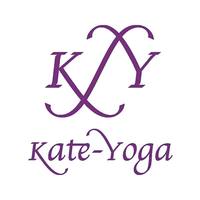|
As I've written about before, the linking of Plank, Chaturanga, Upward Facing Dog and Downward Facing Dog together is a complex series of poses that Flow practitioners do hundreds if not thousands of times over the lifetime of their practice. The last two blog posts have focused on the specificity of Upward Dog and Chaturanga individually, today I'm writing about the transition between the two, which can be just as culpable for injuries if practiced haphazardly as either pose on it's own. The goal in this transition is to catch the shoulders at elbow height in Chaturanga, keep the shoulders and elbows absolutely stable as the feet move, nothing else until the feet are set for Upward Dog. This allows for the 90 degree angle required of Chaturanga to transition to the 180 degree angle that Upward Facing Dog requires without over stressing the lower back or the rotator cuff muscles. The easiest way to start to learn this transition is to involve our handy-dandy blocks and to utilize the knees during the transition. Have your blocks set up on the highest height, shoulder width distance apart just in front of the hands. Set yourself up in plank, fingertips about an inch away from the blocks and lower yourself down into Chaturanga. Keep your pelvis lifted and tailbone heavy as you tap your knees to the floor, lift the feet, point the toes and then lift back up into Upward Dog by straightening the elbows and lifting knees and thighs off the floor. Remember this transition is about moving the feet and keeping everything else about your Plank/Chaturanga as stable and still as possible until you're ready to move to Upward Facing Dog. Take note of your blocks - did they wiggle or fall over during your transition? Try to keep them as still as possible! Next step would be to continue using the blocks, to be sure the shoulders and elbows are taken care of in Chaturanga, but this time keep the legs lifted and straight. This transition requires a LOT more dexterity in the feet. This dexterity and intelligence starts with the correct foot position in plank. Make sure the ball of the foot is on the floor (you'll know the ball of the foot is on the floor if you are able to lift and spread your toes apart while in plank). If you aren't on the balls of your feet, you won't have enough power in your legs to push your feet back from the curled position into the pointed toe position. When you land in Chaturanga, push backwards through the balls of your feet until you come towards your toes, then flip over onto the tops of your feet, inhale up into Upward Facing Dog. On the exhale lift the hips and drag the feet in towards the hands flipping back over the toes into Downward Facing Dog. Here's an overhead view of the foot transition - note the feet are hip distance apart but the outer ankles stay hugged into the midline throughout (no sickling). A few notes about learning this transition -
Here's the transition in full, no props, just me and my mat.
Happy transitioning yogis! -xxx-
2 Comments
|
Kate HeffernanYoga Teacher based in Boston, MA. Teacher of Yoga Teachers. Committed to teaching anatomical, alignment & action based yoga asana that is rooted in mindfulness, skillfulness, & specificity. Archives
March 2020
Categories
All
|

 RSS Feed
RSS Feed
